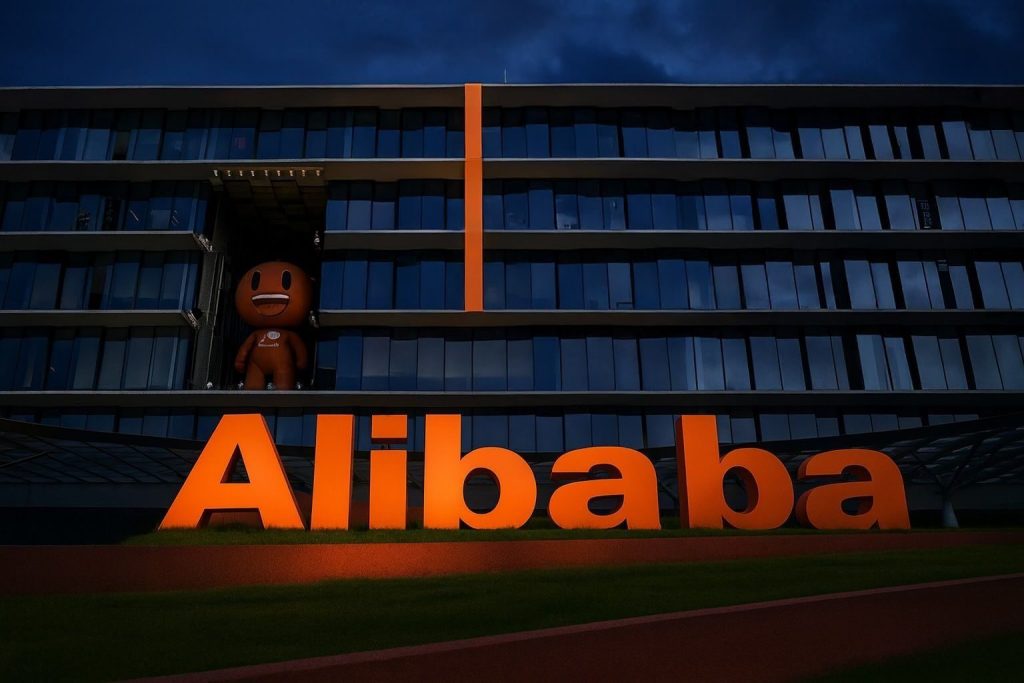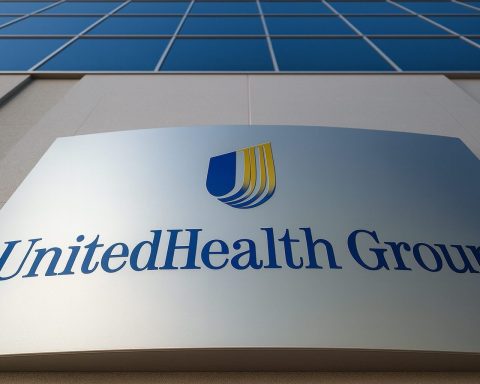Uber Technologies (NYSE: UBER) finished Monday, November 24, 2025, trading around the $83–84 level, edging lower by roughly 0.2–0.3% on the day. That leaves the ride‑hailing and delivery giant well below its recent highs near $102, but still up close to 40% year to date and almost 190% over the past three years, even after a bruising post‑earnings pullback. [1]
At the same time, new valuation pieces, institutional ownership filings, product announcements, and political/legal headlines hit the tape today, giving traders and longer‑term investors plenty to chew on.
Key takeaways on Uber stock for November 24, 2025
- Price & performance: UBER closed near $83.7, slightly in the red, with volume above its 17.4 million‑share average. The stock is down about 11% over the past month but still up ~39% YTD and ~190% over three years; it trades about 18% below its 52‑week high of $101.99. [2]
- Valuation debate intensifies: A fresh Simply Wall St note and a Zacks “stocks in focus” article highlight that, despite the recent drop, analysts still see roughly 29% upside to an average 12‑month target around $108, while some models argue the shares are either richly valued on near‑term metrics or significantly undervalued on long‑term cash flows. [3]
- Mixed institutional moves: New 13F‑based pieces show Bank Julius Baer trimming its UBER stake by about 8%, Titleist Asset Management cutting its position by ~76%, and Global Retirement Partners establishing a multi‑million‑dollar position — all reported today but reflecting second‑quarter portfolio activity. [4]
- Product & brand news today: Uber rolled out (or was the focus of coverage on) Uber One family sharing, its first national holiday “Close” ad campaign focused on suburban riders, and fresh press around a global autonomous delivery partnership with Starship Technologies — all aimed at deepening loyalty and expanding into underpenetrated markets. [5]
- Legal, regulatory & political overhang: Headlines this month include a European legal challenge to Uber’s AI‑driven pay algorithms, a fine in New South Wales, Australia over driver eligibility, and a New York City story on Uber’s PAC spending more than $250,000 backing candidates for City Council Speaker, underlining ongoing scrutiny around labor, safety, and political influence. [6]
Uber stock price snapshot (24 November 2025)
Based on late‑day data:
- Last price: about $83.7
- Daily move: down roughly $0.18–0.22, or ~0.2–0.3%
- Intraday range: roughly $83.0 – $84.8
- Volume: ~24.8 million shares, comfortably above the ~17.4 million average. [7]
Key valuation and balance‑sheet markers from public data:
- Market cap: ~$174 billion
- Trailing P/E: ~10.7 on TTM EPS of $7.79, artificially low because 2025 earnings include a $4.9 billion tax valuation release and gains on equity investments. [8]
- Forward P/E: about 24x next‑year earnings;
- Price‑to‑sales: ~3.5x; P/FCF ~(20x) on robust free cash flow. [9]
- 52‑week range:$59.33 – $101.99, putting today’s close about 18% below the high but more than 40% above the low. [10]
- Ownership & sentiment: roughly 81% of the float held by institutions; short interest is modest around 2.6% of float; Finviz shows an aggregate “Recom” score around 1.5, consistent with a broad “Buy” bias. [11]
Technically, after a nearly 11% monthly slide and a 13% drop over the quarter, UBER’s 14‑day RSI sits around 28, a level many traders consider “oversold,” though that alone does not guarantee a rebound. [12]
Today’s Uber headlines: November 24, 2025
1. Valuation and sentiment: Is UBER now “cheap” or still “priced for perfection”?
A new piece from Simply Wall St, published today, points out that Uber’s share price has fallen about 11% over the last month, even though it remains up over 30% year to date and almost 200% over three years. [13]
Some of the key angles from that analysis and today’s Zacks coverage:
- Earnings upgrades vs price declines: Zacks notes that UBER’s share price has dropped ~10–11% over the past month even as earnings estimates have been revised higher by roughly the high‑single digits, a combination that typically improves a stock’s valuation profile. [14]
- DCF vs market price: Simply Wall St’s discounted cash‑flow model still implies a fair value far above the current share price, while acknowledging that short‑term market opinion is more cautious after the post‑earnings sell‑off. [15]
- Near‑term worry points: These notes highlight:
- legal and regulatory costs that have already taken a sizeable bite out of Q3 profits,
- pressure from new legal challenges to Uber’s pay algorithms in Europe, and
- increasing political scrutiny in key markets (see below). [16]
In other words, the valuation conversation today is less about whether Uber is a “real” business — its profitability and free cash flow are now well established — and more about how big a legal, regulatory, and competition discount investors should apply.
2. Institutional moves: Profit‑taking meets new buying interest
Several MarketBeat alerts dated November 24 draw attention to UBER’s institutional shareholder base:
- Bank Julius Baer & Co. Ltd Zurich
- Trimmed its UBER stake by about 8.4% in Q2, selling roughly 167,000 shares and ending the period with about 1.83 million shares. [17]
- Titleist Asset Management
- Slashed its position by roughly 76%, selling just over 26,000 shares and finishing with around 8,300 shares. The same note cites significant insider selling in recent months, totaling on the order of hundreds of thousands of shares. [18]
- Global Retirement Partners
- Took the other side of that trade, establishing a new position of about 74,000 shares, valued at roughly $6.9 million at the time of the Q2 filing. [19]
All of these moves reflect earlier‑in‑the‑year activity reported via 13F filings, but their publication today helps explain some of the “mixed signals” retail investors may be seeing: major long‑only funds are both harvesting gains and opening new positions in UBER at today’s levels.
3. Brand, product and growth stories in today’s news
a. “Close” – Uber’s first national holiday film
Creative‑industry coverage today focuses on Uber’s first national holiday commercial, a short film called “Close”, launched in the UK. [20]
According to DesignRush’s breakdown:
- The spot centers on a father–daughter story unfolding during an airport pickup ride, backed by a cover of Fleetwood Mac’s “Landslide.”
- The campaign’s goal is to grow Uber’s presence in suburban and “sparse” markets, which management has said are only about 20% penetrated so far — a theme repeated on the Q3 2025 earnings call. [21]
- Strategically, it positions Uber not just as a utility, but as a reliable emotional bridge between airports and home, especially during peak holiday travel.
From an investor’s perspective, this ad isn’t about a single quarter of revenue; it ties into Uber’s broader suburban expansion strategy, where each incremental market can add high‑margin rides to the existing platform.
b. Uber One family sharing
A separate article today details a new family sharing feature for Uber One, the company’s subscription program. [22]
Highlights from that analysis:
- Existing Uber One members can extend benefits (discounted rides, $0 delivery fees above certain order thresholds, priority pickups) to an additional adult in their “family,” effectively doubling perceived value for couples or parent–child pairs.
- Commentary in the piece suggests Uber is responding to subscription churn in the mid‑teens percentage per quarter, aiming to “lock in” households rather than individuals.
- Analysts quoted there estimate the change could boost subscription revenue by roughly 5–10% by 2026, assuming steady growth from an estimated 15 million current members.
The feature also raises data‑privacy questions, since sharing membership means sharing more location and usage data across a household — a non‑trivial consideration in regions governed by stricter rules like GDPR.
c. Autonomous delivery partnership with Starship Technologies
Autonomous‑vehicle and robotics outlets today are also highlighting Uber’s global collaboration with Starship Technologies to roll out sidewalk delivery robots. [23]
Key points from the Starship–Uber announcement:
- The partnership will launch in Leeds, UK, in December 2025, then expand to additional European countries in 2026 and the U.S. in 2027.
- Starship already operates a fleet of 2,700+ delivery robots, with plans to scale above 12,000 by 2027, and has completed more than 9 million deliveries across several countries.
- For Uber Eats, this provides a pathway to lower‑cost last‑mile logistics in dense neighborhoods and campuses, potentially boosting delivery margins over time.
Combined with Uber’s previously announced plans to deploy autonomous vehicles powered by NVIDIA’s AI architecture, the Starship tie‑up underscores that Uber is betting heavily on automation to protect long‑term profitability. [24]
d. Local and seasonal initiatives
A few smaller, but telling, items from today’s news flow:
- Free holiday rides: Local TV coverage from Atlanta’s 11Alive describes a Thanksgiving program offering free Uber rides to reduce drunk driving, reinforcing Uber’s safety‑and‑community messaging in U.S. markets. [25]
- Premarket move: An Investing.com premarket wrap noted Uber trading higher alongside names like Novo Nordisk and Bristol Myers this morning before the stock ultimately drifted lower by the close. [26]
4. Politics, labor, and legal risks still shaping the narrative
Today’s stock action sits against a dense backdrop of regulatory and political developments from the last few weeks.
a. European AI‑driven pay lawsuit threat
A detailed Guardian report on November 19 describes how non‑profit Worker Info Exchange has sent Uber a “letter before action” alleging that its algorithmic, AI‑driven pay systems have reduced driver incomes and breached European data‑protection law. [27]
Key elements:
- The group argues that Uber’s dynamic pricing system uses drivers’ own historic data to set fares and pay rates in ways that are opaque and potentially exploitative.
- It is preparing to bring collective proceedings in Amsterdam, where Uber’s European business is based, if the company does not change course and compensate affected drivers.
- Uber rejects the findings, saying the research underlying the claims is based on incomplete and non‑causal data and that drivers retain transparency and choice over trips.
This case matters for investors because it could set precedents on algorithmic pay transparency and driver rights across the EU, potentially impacting Uber’s ability to fine‑tune incentives and pricing.
b. Safety fine in New South Wales
In Australia, reporting this month revealed that Uber was fined A$250,000 by the NSW Point‑to‑Point Transport Commissioner after at least 57 Uber Eats drivers were found to have carried out more than 100 unauthorized passenger trips in 2022, in some cases without proper local licences. Uber self‑reported the issue and says it has improved its systems, but regulators signaled ongoing monitoring. [28]
While the fine is not material financially, it contributes to a broader narrative that regulators are increasingly willing to act when ride‑share platforms blur the lines between food‑delivery and passenger transport.
c. Political spending in New York City
A new article from Streetsblog NYC today details how Uber’s New York PAC spent over $250,000 supporting two candidates — Council Members Crystal Hudson and Julie Menin — who are competing to become the next New York City Council Speaker, a role that controls which bills come to a vote. [29]
The piece raises questions about:
- What Uber hopes to gain from that level of political support,
- How it might influence worker‑protection legislation (including a bill on app‑worker deactivations), and
- Whether similar spending could become a pattern in other key cities.
For shareholders, this underscores that Uber’s competitive and regulatory moat is partially built through policy engagement, which can attract criticism and reputational risk even when it’s fully legal.
Earnings and fundamentals: Why the stock sold off this month
The current bout of weakness in UBER shares traces back to its Q3 2025 earnings, released on November 4.
From Uber’s own press release and follow‑up coverage:
- Gross bookings: up 21% year over year to $49.7 billion.
- Revenue: up 20% to $13.5 billion, slightly ahead of Wall Street estimates. [30]
- Adjusted EBITDA:$2.26 billion (company release: $2.26B; press‑release figure rounded to $2.3B), up 33% YoY with a 4.5% margin on gross bookings. [31]
- Net income:$6.6 billion, inflated by a $4.9 billion tax valuation release and gains on equity investments. [32]
- Free cash flow: around $2.2 billion for the quarter. [33]
However, investors focused on the quality rather than the quantity of those profits:
- Operating income was about $1.11 billion, well below consensus expectations around $1.6 billion, in part due to roughly $479 million of legal and regulatory‑related charges. [34]
- Q4 guidance for adjusted EBITDA of $2.41–2.51 billion came in with a midpoint just shy of Wall Street’s forecast, even though gross bookings guidance of $52.25–53.75 billion actually beat expectations. [35]
As the Los Angeles Times and Reuters both noted, the result was a near‑10% drop in UBER shares on November 4, their steepest one‑day slide in many months, even as the underlying growth metrics (trips, bookings, revenue) remained very strong. [36]
That sell‑off — more than any single headline today — explains why:
- performance over the last week is around ‑9%,
- performance over the last month is about ‑11%,
- yet year‑to‑date and three‑year returns are still robust. [37]
Today’s valuation pieces, institutional news, and product announcements are essentially the market re‑digesting that earnings report and asking whether the pullback is enough compensation for the added legal and regulatory clouds.
What Wall Street and “smart money” are saying about UBER
Analyst consensus
MarketBeat’s latest compilation of Wall Street research shows: [38]
- 40 analysts covering the stock over the past 12 months.
- Consensus rating:“Moderate Buy” — with 0 Sell, 8 Hold, and 32 Buy/Strong Buy ratings.
- Average 12‑month price target:$108.26, implying roughly 29% upside from the low‑$80s.
- Target range:$78 (bear case) – $135 (bull case).
Other data providers show similar optimism, with an aggregate target around $111–112 and Uber ranking in the top decile of the technology sector on composite scores that blend valuation, growth, and analyst sentiment. [39]
Hedge‑fund interest: Ackman’s big bet
A November 17 feature on 24/7 Wall St highlights Uber as billionaire Bill Ackman’s largest holding, with Pershing Square reportedly owning about 30.3 million UBER shares, valued at more than $2.8 billion at the time of writing. [40]
The article frames Ackman’s thesis roughly as follows:
- Uber has pivoted from chronic losses to consistent profits and free cash flow,
- Gross bookings growth of 21% last quarter suggests the platform is still in a high‑growth phase, and
- the market may still be undervaluing Uber as a structural compounder rather than a mature, low‑growth tech name.
Of course, other institutions — like the ones trimming today — are more cautious, choosing to lock in gains after the big multi‑year run.
What today’s setup may mean for Uber stock watchers
Nothing here is individualized financial advice, but we can summarize how the pieces fit together for someone analyzing UBER right now:
1. The bull case in today’s news
From the positive side of the ledger:
- Fundamentals remain strong: Double‑digit growth in bookings and revenue, expanding adjusted EBITDA, and solid free cash flow all point to a business that has found a profitable scale in both Mobility and Delivery. [41]
- Automation and subscriptions add optionality: The Starship robot‑delivery deal, broader AV partnerships, and Uber One enhancements (including today’s family‑sharing feature) aim to improve unit economics and lock in recurring revenue over the next several years. [42]
- Brand expansion into new markets: The “Close” holiday film and suburban growth focus seek to extend Uber’s reach beyond urban cores, a market executives say is only partly tapped. [43]
- Valuation vs. growth: Even after adjusting for one‑off tax benefits, a forward P/E in the mid‑20s and a price‑to‑sales ratio around 3.5x are not extreme for a platform delivering this level of growth and cash generation, especially when analyst targets suggest double‑digit upside. [44]
2. The bear (or at least cautious) case
On the risk side:
- Legal and regulatory costs are real: The $479 million of legal‑related charges in Q3 and the string of recent stories — from European AI‑pay challenges to Australian safety fines and aggressive political spending in New York — show that Uber’s regulatory bill is far from settled. [45]
- Guidance vs expectations: While bookings guidance is strong, earnings guidance didn’t wow the market, which can compress valuation multiples if investors think margin progress will be slower or more volatile than hoped. [46]
- Insider and institutional selling: Recent insider sales and some profit‑taking by large funds send a signal — not necessarily that the long‑term story is broken, but that easy money may have already been made, at least in the near term. [47]
- Macro and competition: Ride‑sharing and delivery remain competitive, with Lyft, DoorDash, regional super‑apps, and emerging autonomous players all vying for share; at the same time, consumer spending could waver if macro conditions weaken.
3. What to watch next
For anyone tracking UBER after today:
- Legal milestones: Watch for whether the EU AI‑pay case actually gets filed in Amsterdam and for any updates on other investigations referenced in the Q3 charge. [48]
- Adoption of Uber One family sharing and suburban growth: Management commentary in upcoming quarters on subscription growth, churn, and suburban ride volumes will show whether today’s marketing and product moves are working. [49]
- Execution on robotics and AV: Progress on Starship deployments and broader autonomous fleets will be important for Uber’s long‑run cost structure and competitive positioning. [50]
- Next earnings (Q4 2025): Guidance implies continued growth and margin expansion; the market will be watching whether legal costs and regulatory headwinds remain a one‑off or prove more persistent. [51]
Final word
As of November 24, 2025, Uber’s stock sits in a classic tug‑of‑war:
- On one side: strong growth, improving profitability, high institutional and hedge‑fund interest, plus new initiatives in subscriptions, automation, and branding.
- On the other: mounting legal, regulatory, and political risks, recent insider and institutional selling, and a post‑earnings hangover that has pushed the chart into “oversold” territory.
Whether UBER is a buy, hold, or avoid depends on your risk tolerance, time horizon, and view on regulators vs. innovation. This article is for information and news purposes only and should not be taken as personalized investment advice — but it should give you a solid, up‑to‑date picture of what moved Uber stock today and why.
References
1. finviz.com, 2. finviz.com, 3. simplywall.st, 4. www.marketbeat.com, 5. www.webpronews.com, 6. www.theguardian.com, 7. finviz.com, 8. finviz.com, 9. finviz.com, 10. finviz.com, 11. finviz.com, 12. finviz.com, 13. simplywall.st, 14. www.zacks.com, 15. simplywall.st, 16. www.latimes.com, 17. www.marketbeat.com, 18. www.marketbeat.com, 19. www.marketbeat.com, 20. news.designrush.com, 21. news.designrush.com, 22. www.webpronews.com, 23. www.businesswire.com, 24. www.businesswire.com, 25. www.11alive.com, 26. m.investing.com, 27. www.theguardian.com, 28. www.dailytelegraph.com.au, 29. nyc.streetsblog.org, 30. s23.q4cdn.com, 31. s23.q4cdn.com, 32. s23.q4cdn.com, 33. s23.q4cdn.com, 34. www.reuters.com, 35. s23.q4cdn.com, 36. www.latimes.com, 37. finviz.com, 38. www.marketbeat.com, 39. finviz.com, 40. 247wallst.com, 41. s23.q4cdn.com, 42. www.businesswire.com, 43. news.designrush.com, 44. finviz.com, 45. www.latimes.com, 46. www.reuters.com, 47. www.marketbeat.com, 48. www.theguardian.com, 49. www.webpronews.com, 50. www.businesswire.com, 51. s23.q4cdn.com









